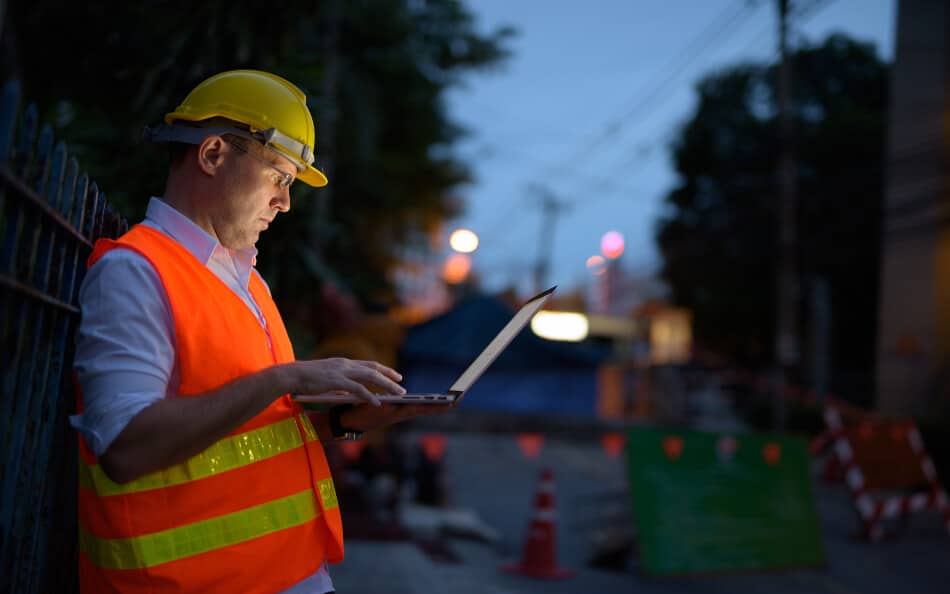Construction site safety and compliance is a global industry issue. When construction companies fail to carry out safe and compliant workplace practices, it’s the employees who are at risk. It is only through effective internal inspection programs and processes that companies can keep their workers safe and ensure good quality, health, safety, and environment (QHSE) compliance.
Quality, health, safety and the environment (QHSE) are important aspects of any construction project. They must be managed in collaboration with all project stakeholders – clients, contractors, subcontractors, and other partners.
It is now common knowledge that technology and construction management software can help in this aspect of a construction business. Even with the construction sector becoming more receptive to technology adoption, many are still reluctant to use technology and tech tools in the construction site. People only need to realise the benefits of technology and construction management apps for them to overcome the adoption barriers.
Related reading: Most common construction problems that construction technology can solve.
Let’s Take a Look at the Benefits of QHSE Digitisation
Switching to a digital QHSE system takes time. But in the end, it would be worth it. If you’re managing multiple projects and sites across worldwide locations, a digitised QHSE inspections system is the only effective solution. A digitised QHSE strategy can save multiple teams time and save money. A central QHSE system creates a safer and higher quality work environment for your employees.
Increase in Productivity
Streamlining QHSE checklists into every construction project from day one and consecutively monitoring them throughout the entire project cycle result to performance and KPI tracking at all times. This leads to regular reviews and audits that further benchmark QHSE performance at all construction sites. Ultimately, the only end scenario for you would be an overall increase in productivity.
Solution to Manpower Shortage
Managing QHSE processes and the whole job site digitally is a grand strategy to overcome the strain from construction labour shortage. Mobile devices allow for all information to be collected on site. That means all tasks and events will be centralised in one universal plan that allows real-time monitoring of all workers and activities. You end up managing your workers efficiently while eliminating unnecessary administrative time back in the office.
Lower Operating Costs
One of the more obvious effects of digitising is that it reduces cost and time overruns. With an active QHSE system, construction companies, whether big or small, can quickly make project changes while avoiding huge risks. Tasks are monitored and completed in phases resulting in big projects simplified into manageable sets of functions. Projects become easier to handle, which eliminates risks and reduces errors and results in lower operating costs and improvement in project quality and delivery.
Revenue Growth
A digitised QHSE system translates to proper planning, better communication, improved safety and increased productivity. The better you are at these things, the better your construction revenue.
Stay Competitive
In an industry where productivity remains a considerable challenge, digitising your processes and digitalising your business are your options to stay competitive. The move to digital transformation is inevitable as it will be the only road to take to solve construction productivity problems and labour shortage.
Digitisation is Inevitable
Because of smartphones and mobile Internet, we have never stopped staying connected. This way of living has leaked out and into our professional worlds. If your company has methods and processes susceptible to digital improvements, there is no escaping digitisation and digitalisation.
As most issues associated with QHSE procedures and systems can all be addressed by digital solutions, it would be impossible to escape digitisation. Pre-digital businesses will have to go through this inevitable revolution. For companies wanting to escape or to minimise their digitising to only certain processes, they will get left behind.
Digitisation has made people and objects interconnected; it has made interaction very easy and efficiently through the Internet. In the professional context, this minimises communication delays and bridges the communication gap.
Further reading: What is QHSE digitalisation?
Why Digitise Your QHSE Inspection Processes
In a 2016 National Safety Council report, 78% of safety professionals still use obsolete methods to manage safety tasks and activities. Only 19% get notified of safety hazards in real time. Obviously, most companies still put their workers at a huge risk. Up-to-date QHSE information should be available at all times and construction companies have now the option to have them. Deploying a construction management software capable of doing QHSE inspections allows companies to have a central system for QHSE aspects and eliminates errors associated with logging and transferring information.
Identify Your QHSE Goals and Needs
Prior to choosing a construction QHSE management software, your company has to identify your specific QHSE inspection goals and needs.
- Can you integrate it with your existing QHSE system?
- Is it intuitive to use for your employees?
- How many employees will be using the software?
- Can you create a generic inspection checklist library for different projects and sites?
- WIll it eliminate pen-and-paper methods and instead share information and data through an effective mobile platform, offline or online?
- Will it allow you to track non-conformities and non-compliances and metrics to identify patterns for improvement opportunities across all projects?
A construction QHSE management software would allow you to assign and track QHSE inspections using custom checklists for project site assessments, including custom reporting and cloud-based offline mobile real-time inspections.
5 Ways Digitalisation Can Improve Construction Safety:
1. Streamlined Processes
Cloud-based mobile applications allow companies to digitise and streamline all safety processes fully.
2. Sharing Best Practices
Reporting and sharing best practices on mobile devices impart safety knowledge and increase safety awareness.
3. Monitoring Safety Wearables
Allowing the digital monitoring of safety wear and equipment could prove invaluable especially for workers carrying out hazardous jobs.
4. Managing Crisis
Informing site supervisors and management immediately through devices once an accident has occurred saves time during critical situations.
5. Predictive Analytics
Once processes are digitised, data collected can be analysed to identify safety-related trends.
Safety should be a central point for any construction company that wants to keep growing and stay competitive. Contractors that put safety second to cost and timelines have seen the consequences and they were not pretty. Don’t be that company.



